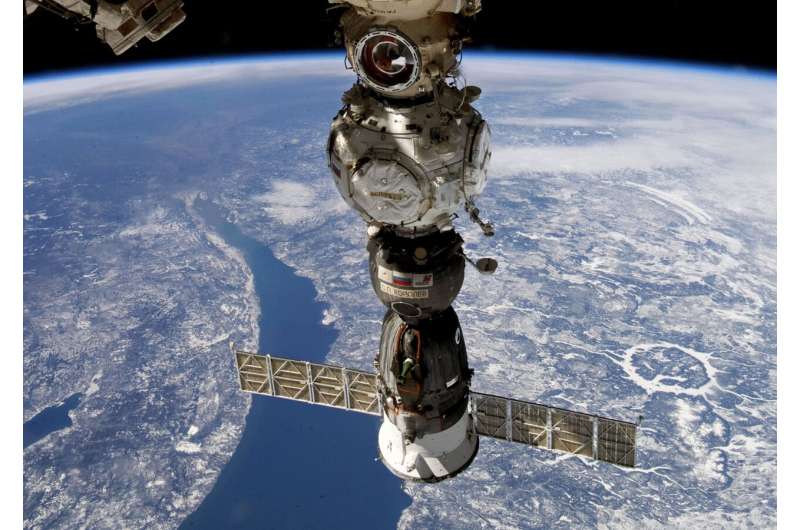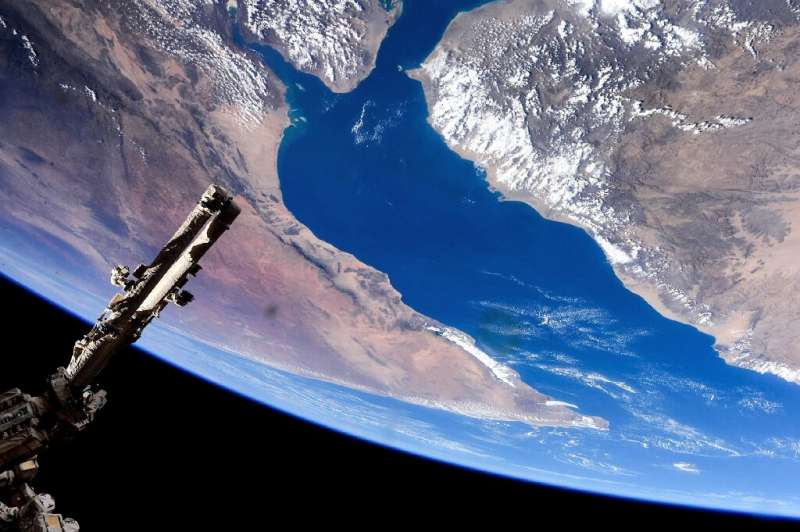
Copernical Team
Martian meteorite contains large diversity of organic compounds
 The Martian meteorite Tissint contains a huge diversity of organic compounds, found an international team of researchers led by Technical University of Munich and Helmholtz Munich's Philippe Schmitt-Kopplin and including Carnegie's Andrew Steele. Their work is published in Science Advances.
Tissint, which crash landed in Morocco more than 11 years ago, is one of only five Martian meteorite
The Martian meteorite Tissint contains a huge diversity of organic compounds, found an international team of researchers led by Technical University of Munich and Helmholtz Munich's Philippe Schmitt-Kopplin and including Carnegie's Andrew Steele. Their work is published in Science Advances.
Tissint, which crash landed in Morocco more than 11 years ago, is one of only five Martian meteorite Pausing to take in the view: Sols 3710-3711
 At this point in the mission, the team is very good at responding to tactical surprises. Today, we did not receive the necessary downlink to proceed with the nominal plan. Fortunately, we received enough downlink to know that the last plan finished successfully and the rover is safe. All we need to do is wait for the missing data and keep going!
We have enough images to look at the terrain
At this point in the mission, the team is very good at responding to tactical surprises. Today, we did not receive the necessary downlink to proceed with the nominal plan. Fortunately, we received enough downlink to know that the last plan finished successfully and the rover is safe. All we need to do is wait for the missing data and keep going!
We have enough images to look at the terrain In search of a new marker band drill site: Sols 3708-3709
 We continue to characterize the Marker Band and the bedrock just below it, with the aim of understanding the origin of the Marker Band. For today's two-sol plan, in an area below the Marker Band, we planned early morning APXS and MAHLI (Touch and Go) on the brushed target "Jenipapo," similar to the flattest material in the accompanying Mastcam image.
Mastcam will acquire some multi-spectra
We continue to characterize the Marker Band and the bedrock just below it, with the aim of understanding the origin of the Marker Band. For today's two-sol plan, in an area below the Marker Band, we planned early morning APXS and MAHLI (Touch and Go) on the brushed target "Jenipapo," similar to the flattest material in the accompanying Mastcam image.
Mastcam will acquire some multi-spectra SpaceX capsule lands safely on return from ISS
Rocket Lab sets new date for first Electron launch from U.S. soil
 Rocket Lab USA, Inc (Nasdaq: RKLB) has announced the launch window for its first Electron mission from U.S. soil is scheduled to open on January 23, 2023 with back-up dates extending through early February. The daily launch opportunity runs from 6:00 pm - 8:00 pm EST (23:00 - 1:00 UTC).
The "Virginia Is For Launch Lovers" mission will lift-off from Launch Complex 2 at Virginia Space's Mid-
Rocket Lab USA, Inc (Nasdaq: RKLB) has announced the launch window for its first Electron mission from U.S. soil is scheduled to open on January 23, 2023 with back-up dates extending through early February. The daily launch opportunity runs from 6:00 pm - 8:00 pm EST (23:00 - 1:00 UTC).
The "Virginia Is For Launch Lovers" mission will lift-off from Launch Complex 2 at Virginia Space's Mid- Private U.S. space company ABL fails to launch from Alaska
 An effort to put a satellite launcher into low-Earth orbit from Alaska's Kodiak Island failed after the rocket crashed back to the launchpad, destroying the facility, private U.S. company ABL Space Systems said.
The ABL RS1 lifted off from its Kodiak Island launchpad midafternoon Alaska time on Tuesday. The company said through its official Twitter account that it experienced an "anomal
An effort to put a satellite launcher into low-Earth orbit from Alaska's Kodiak Island failed after the rocket crashed back to the launchpad, destroying the facility, private U.S. company ABL Space Systems said.
The ABL RS1 lifted off from its Kodiak Island launchpad midafternoon Alaska time on Tuesday. The company said through its official Twitter account that it experienced an "anomal Russia to send rescue mission to space station
 Russia said Wednesday that it will send an empty spacecraft to the International Space Station (ISS) next month to bring home three astronauts whose planned return vehicle was damaged by a strike from a tiny meteoroid.
The Russian space agency, Roscosmos, made the announcement after examining the flight worthiness of the Soyuz MS-22 crew capsule docked with the ISS that sprang a radiator coo
Russia said Wednesday that it will send an empty spacecraft to the International Space Station (ISS) next month to bring home three astronauts whose planned return vehicle was damaged by a strike from a tiny meteoroid.
The Russian space agency, Roscosmos, made the announcement after examining the flight worthiness of the Soyuz MS-22 crew capsule docked with the ISS that sprang a radiator coo Russia will launch new capsule to return space station crew

Space junk, not meteorites, remains biggest threat to spacecraft

Russian announced on Wednesday a February mission to the International Space Station to pick up crew members left stranded after a strike damaged the capsule that was to take them home.
Didier Schmitt, the European Space Agency's head of human and robotic exploration, said it was not rare for tiny meteorites to hit the space station.
The micrometeorites can be traveling at speeds from 10 to 30 kilometers (6-18 miles) a second—"much faster than a shotgun bullet," Schmitt said.
That is why, when the space station's large observation window is not in use, it is shuttered with "very, very thick layers of protective materials," he said.
Five things to know about the International Space Station

Here are some key facts about the orbiting laboratory set up to advance space exploration—and prepare to send humans to Mars—where Russians and Americans have worked together for a quarter of a century.
Size of a football field
The ISS is the largest man-made structure ever put into orbit.
Launched in 1998 by the United States, Russia, Canada, Japan, and members of the European Space Agency (ESA) it is the size of a football field and weighs about the same as a jam-packed Boeing 747.
Built at a total cost of about 100 billion dollars, mostly paid for by the US, it orbits the Earth every 90 minutes at an average altitude of 400 kilometres (250 miles).
It has been permanently occupied since November 2000 by Russian and American-led crews that usually stay for around six months to carry out experiments in microgravity (weightlessness) which have practical applications on Earth and help prepare for future Mars missions.

